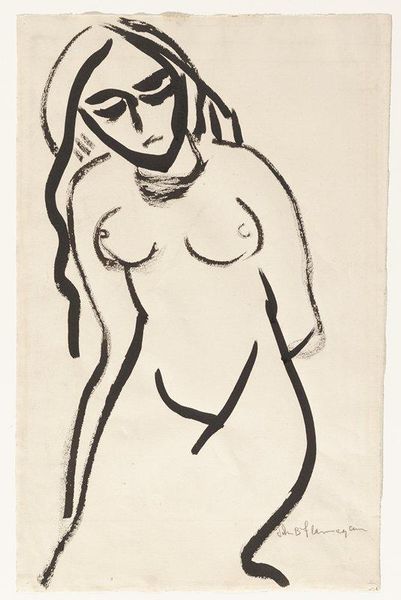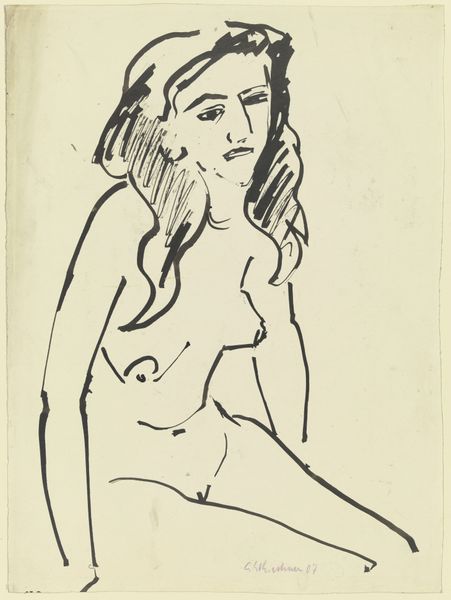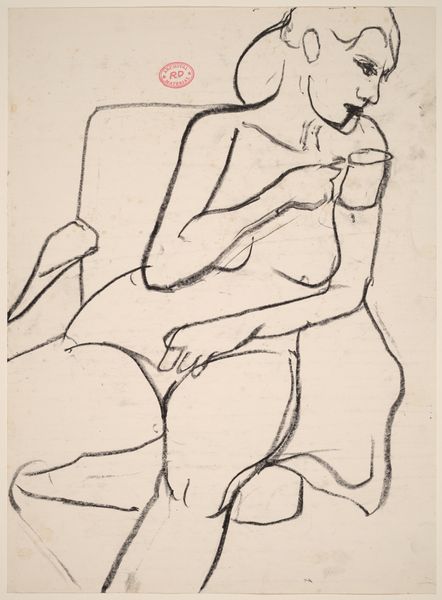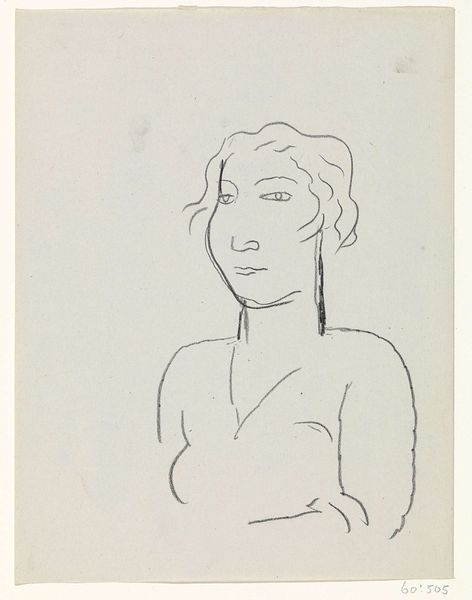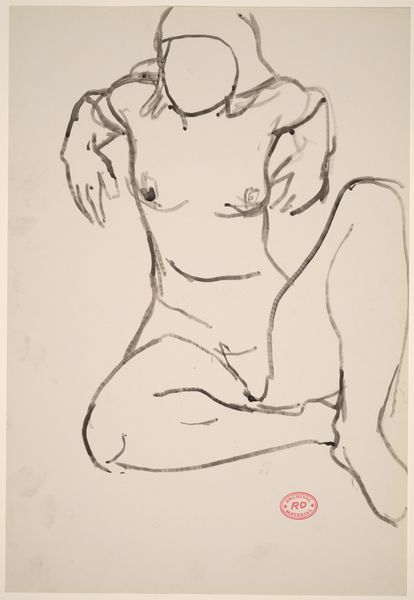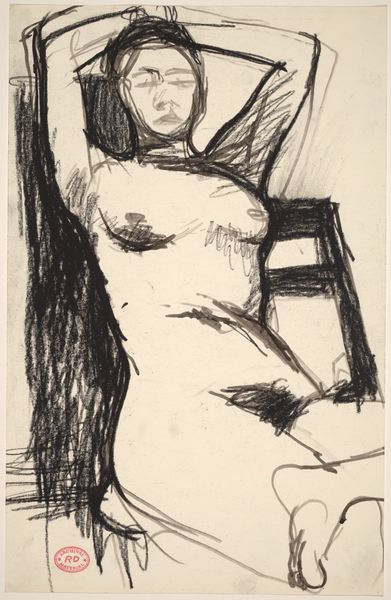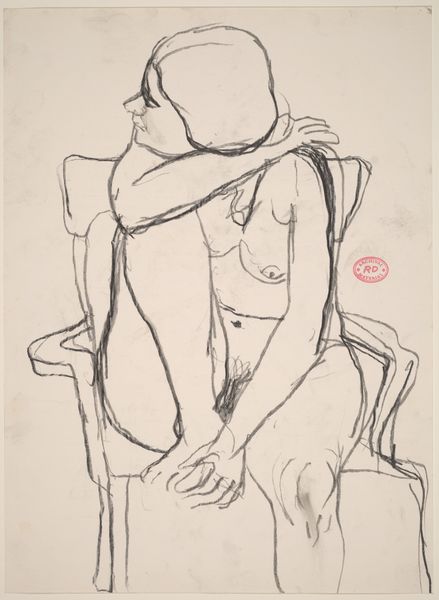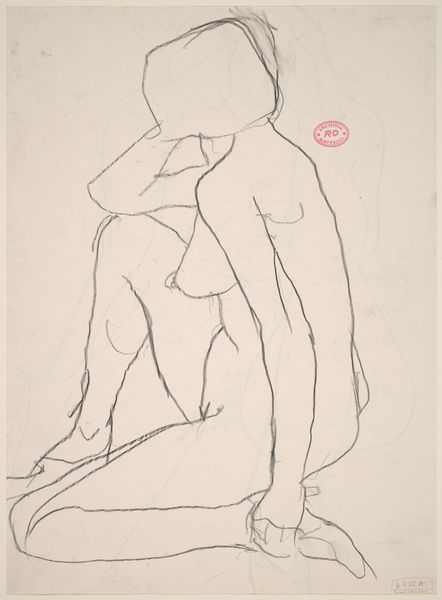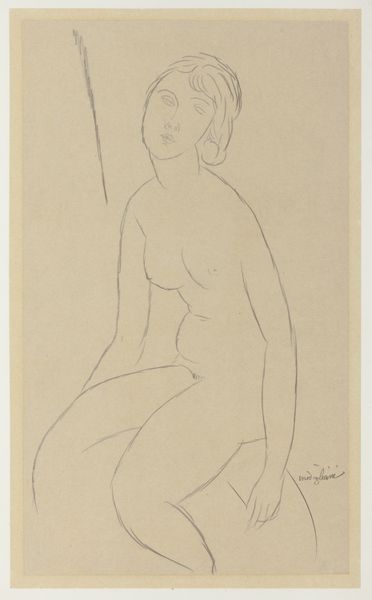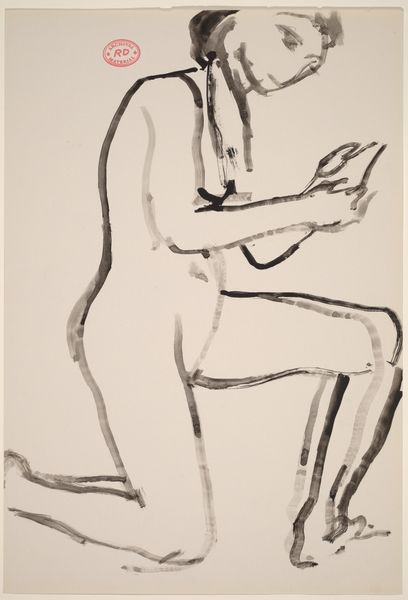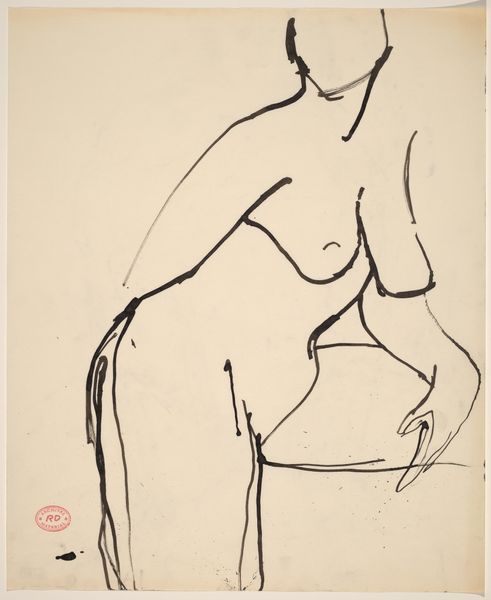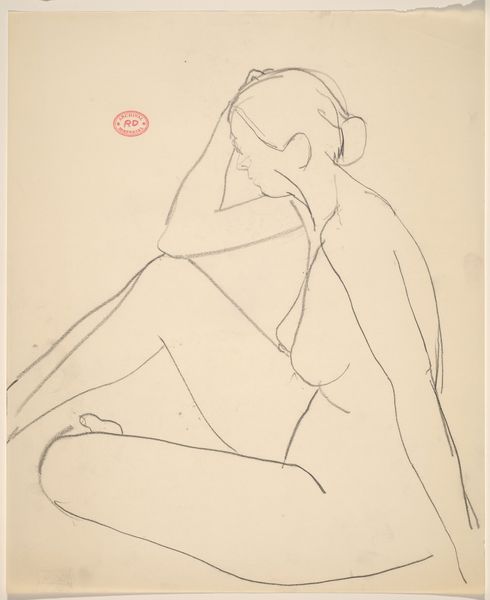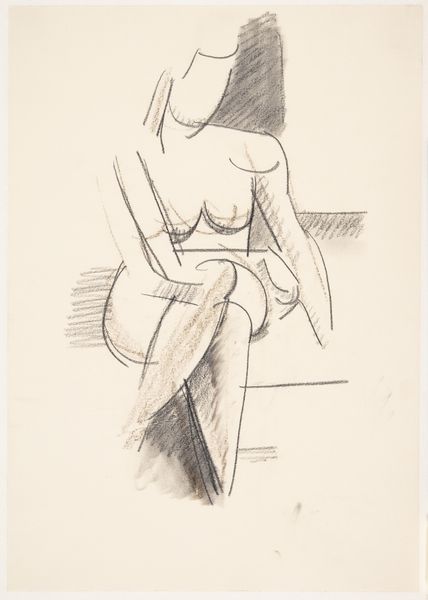
drawing, ink
#
portrait
#
drawing
#
caricature
#
german-expressionism
#
figuration
#
ink
#
expressionism
#
line
#
portrait drawing
#
nude
#
monochrome
Copyright: Public Domain
Editor: Here we have Kirchner's "Fränzi as a Nude, Her Hand on Her Chin" from around 1910. It's an ink drawing, and the bold, almost harsh lines create such a raw feeling. What jumps out at you when you look at it? Curator: I’m immediately struck by the deliberate use of ink. Notice how it isn't just a tool for depiction, but a core element shaping our understanding of labor and production. Ink, a commodity, is applied in stark strokes, transforming the female form into an object of the modern gaze. What does that tell us about the economic underpinnings of artistic creation at the time? Editor: That’s interesting. I hadn't considered the economic side of it. So, you're saying the choice of a relatively inexpensive material like ink, and the rapid way it’s applied, reflects something about the changing art market or perhaps the artist’s own position within it? Curator: Exactly. Think about the act of drawing itself, traditionally seen as preliminary to painting, and therefore less valuable. By elevating ink drawing, Kirchner is potentially challenging those established hierarchies. The swift, almost aggressive marks – how do they speak to the industrial pace that was transforming society? Does this connect to his Expressionist ideas? Editor: It makes sense. The quick lines could reflect a sense of urgency and immediacy in a rapidly changing world, which certainly aligns with the Expressionist movement’s feelings about the modern world. How did the rise of German Expressionism influence what materials artists like Kirchner selected? Curator: The movement embraced a direct engagement with materials, disrupting bourgeois notions of art’s preciousness. Everyday materials gained new prominence, as art responded to the evolving class and social structure, making statements on alienation and anxieties of modernity through process, not just image. Has looking at this drawing given you any thoughts about art's relationship with society's perception of artistic value? Editor: Definitely. Thinking about Kirchner’s process and material choices gives the piece another layer of meaning. It highlights how the means of production – even in a drawing – are deeply connected to larger social and economic forces.
Comments
stadelmuseum about 2 years ago
⋮
Between 1909 and 1911, the young Lina Franziska (“Fränzi”) Fehrmann (1900–1948) was one of the Brücke artists’ favoured models. Kirchner depicted her in numerous paintings, prints and drawings, among them this brush-and-ink sketch. Kirchner had founded the Brücke artists’ group in June 1905 with the likeminded architecture students Fritz Bleyl (1880–1966), Erich Heckel (1883–1970) and Karl Schmidt-Rottluff (1884–1976). The nude would become one of their most important motifs; Kirchner usually depicted it in motion.
Join the conversation
Join millions of artists and users on Artera today and experience the ultimate creative platform.
